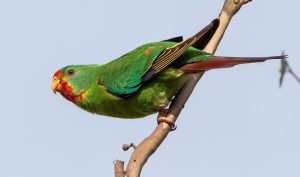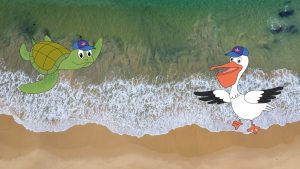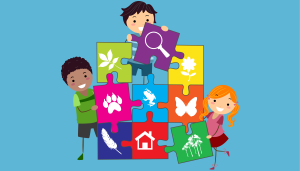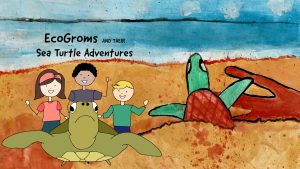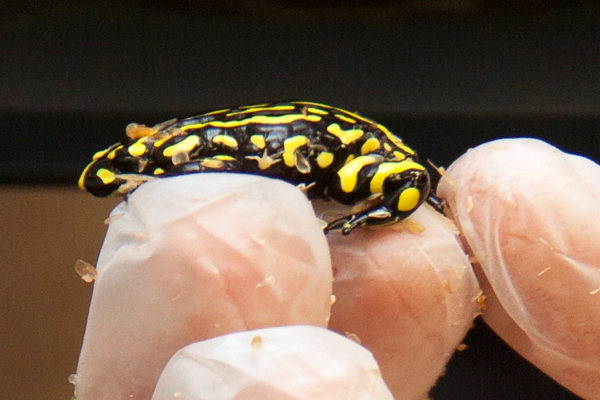
Corroboree Frog Education Kit
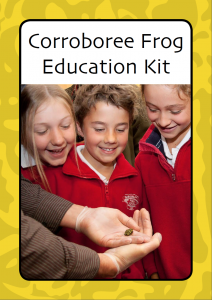 The iconic Southern Corroboree Frog is only found in the wild in Kosciuszko National Park. This species is critically endangered with less than 50 individuals left in the wild. This resource has been created with the aim of helping students and teachers learn about Corroboree Frogs and their fight for survival. Hopefully by raising awareness about Corroboree Frogs the community can support recovery programs to help save this species.
The iconic Southern Corroboree Frog is only found in the wild in Kosciuszko National Park. This species is critically endangered with less than 50 individuals left in the wild. This resource has been created with the aim of helping students and teachers learn about Corroboree Frogs and their fight for survival. Hopefully by raising awareness about Corroboree Frogs the community can support recovery programs to help save this species.
Wirraminna Environmental Education Centre (EEC) Burrumbuttock, located in the Murray catchment, is home to eight endangered Southern Corroboree Frogs (Pseudophryne corroboree). The frogs have been provided by Taronga Zoo from their captive breeding program, which has been operating since 2006 as part of the Southern Corroboree Frog Recovery Project.
Wirraminna EEC is one of only three locations in Australia (other than zoos) where these tiny, yellow and black frogs can be viewed in captivity. Wirraminna EEC will maintain the enclosure into the future, with the frogs on display to the public. The display forms part of a Southern Corroboree Frog education program developed by Wirraminna EEC staff, including Owen Dunlop, Stacee Staunton-Latimer (Education Officer) and Dr Maggie Watson.
Download Corroboree Frog Education Kit
What the kit entails…
This education kit has been designed to raise awareness of the Corroboree Frog by providing activities that have been aligned to the Stage 2 and 3 NSW Syllabus and the Sustainability cross-curriculum outcomes.
- Activity 2.1: A Venn diagram is used to help students determine similarities and differences between 2 living and 1 non-living thing. Students should determine what it means for something to be living: does it drink, eat, grow, move, reproduce, breathe or respond to stimuli.
- Activity 2.2: Students are asked to sort living and non-living things. They must identify any once living or product of living things. Students provide three of their own examples of each living, non-living, once living and products of living things.
- Activity 2.3: Using a simple dichotomous key students classify a list of things. As an extension they can design their own key to classify objects.
- Activity 2.4: Students will learn about Corroboree Frogs by reading Fact Sheet 1 (provided at beginning of kit) and answer 18 questions. Individuals, small groups or class groups can complete this quiz.
- Activity 2.5: Students read the story about Stripes and the Corroboree Frog life cycle. They will translate the story creating a Corroboree Frog life cycle, including timeframes and conditions that trigger certain events.
- Activity 2.6: Students compare their Corroboree Frog life cycle created in Activity 2.5 to the animal and plant life cycle provided. Similarities and differences should be noted in the spaces provided.
- Activity 3.1: A short description and diagram explains Natural Selection. Students are required to explain what is happening in the picture and gain an understanding of natural selection.
- Activity 3.2: Structural adaptations of frogs are provided on a fact sheet. Students are required to label a frog diagram and answer questions relating to the fact sheet.
- Activity 3.3: Students are introduced to adaptations specific to the Corroboree Frog. They are asked to identify the advantages and disadvantages of the different adaptations.
- Activity 3.4: Students are asked to research the Corroboree Frog habitat and describe their food, water, shelter, preferred climatic conditions and places they like to visit.
- Activity 3.5: Using a range of provided websites students are asked to create a poster to display the extreme environment that makes up the Corroboree Frog habitat.
- Activity 3.6: After watching a range of video’s students are asked to answer questions about the Corroboree Frogs plight and the effort to captive breed and release frogs into the wild.
- OI.2 All life forms, including human life, are connected through ecosystems on which they depend for their wellbeing and survival.
- OI.9 Sustainable futures result from actions designed to preserve and/or restore the quality and uniqueness of environments.
Available on Apple Books – The Corroboree Frog
The Corroboree Frog interactive book showcases the Northern and Southern Corroboree Frogs – two of Australia’s most iconic and endangered frog species.

